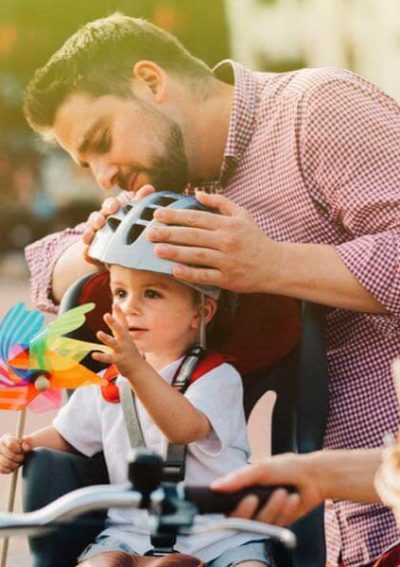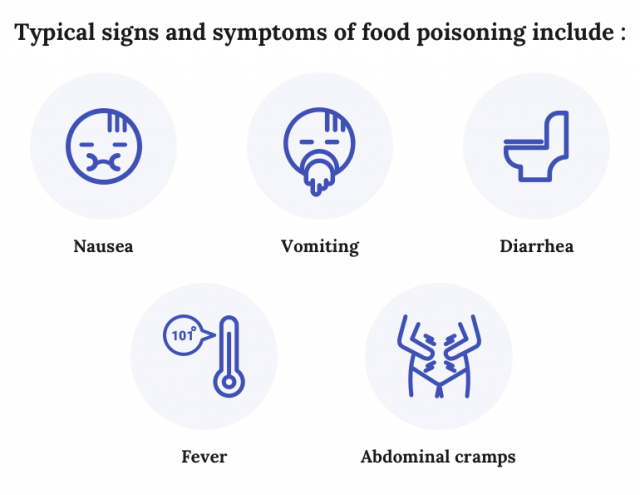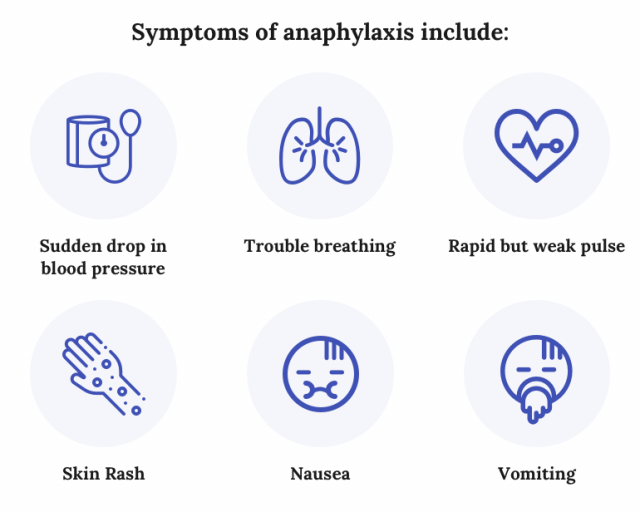Child Safety
As a parent, it’s your job to protect your child. Becoming acquainted with common and hidden hazards in your home and community can help you take important safety steps now to prevent a tragedy later.

Every year, approximately 9 million children land in emergency departments with an accidental injury, according to a Pediatrics in Review journal article Tragically, more than 9,000 of them die from these unintentional injuries, which are the leading cause of death for children in the United States.
Fortunately, there are many steps you can take to protect your child against potentially harmful products and situations.
Babyproofing your home, for instance, can safeguard your child against some of the most common causes of death including: accidental poisoning, suffocation, drowning and falls. And something as simple as securing your child in the right car seat or booster seat — or locking up your gun — can prevent them from becoming another statistic.

Babyproofing Your Home
There’s an old adage that says an ounce of prevention is worth a pound of cure. That’s especially true when it comes to your baby’s safety.
For a comprehensive guide to keeping you children safe from accidental injury, see our babyproofing guide, which includes a printable checklist.
More than 25,000 children are injured every year when a television set, dresser or appliance topples over on top of them. Some children are crushed to death or suffocated by the weight of the furniture. These tragedies can be avoided, however, by anchoring the furniture and TVs to the wall.
Other key things to think about when babyproofing:
- Keep the lid closed and secured with a latch when not in use.
- Use window guards to prevent your child from tumbling out a window.
- Keep all household cleaners, laundry pods and pills locked up and put away.
- Keep children away from exercise equipment and rooms with heavy duty appliances such as treadmills.
- Move cribs, beds and other furniture away from cords or use cordless blinds instead.
- Keep soft toys and soft bedding, including blankets, pillows and bumpers pads, out of the baby's sleep area.
- Keep button batteries out of reach.
If you’re overwhelmed by the thought of babyproofing, hire a babyproofing professional to do it for you. The International Association for Child Safety (IAFCS) is a network of child safety specialists around the country. You can search by zip code on their website to find a professional near you.

Food Safety Basics
Anyone can develop food poisoning, but babies and children face a higher risk. That’s because their developing immune systems have a harder time fighting off germs. It’s important for parents to follow these basic food safety tips.
To prevent infection, avoid feeding children:
- Raw or undercooked meat, poultry, fish or shellfish
- Uncooked sprouts
- Raw or undercooked eggs or foods that contain raw eggs
- Unpasteurized foods and beverages (such as raw milk and unpasteurized juices)
- Honey
Typical signs and symptoms of food poisoning include nausea, vomiting, diarrhea, fever and abdominal cramps. They usually occur within hours or days of consuming a contaminated food or drink. But severe food poisoning can lead to bloody diarrhea, high fevers, dehydration and other complications.
Children under the age of five who contract a Salmonella infection are three times more likely to end up hospitalized, according to the Centers for Disease Control and Prevention. And one in every 7 kids under the age of 5 infected with a strain of E. coli known as E. coli 0157 will end up in kidney failure.

Raw Milk Risks
While the organic food movement has sparked increased consumer interest in raw (unpasteurized) milk, it’s also sparked an increase in foodborne illness. Between 2007 and 2012, there were more than six dozen outbreaks caused by raw milk — quadruple the number that occurred during the previous decade, according to the CDC. Nearly 60 percent of those outbreaks affected children under the age of 5.
Some children have developed Hemolytic Uremic Syndrome (HUS) from ingesting raw milk. The condition, which is associated with certain strains of E. coli, destroys red blood cells. This clogs the kidneys’ filtering system and can lead to kidney failure, stroke and death, according to the CDC.
Children with HUS may exhibit bloody diarrhea, bloody urine, decreased urination, swelling of the face and hands and other symptoms. HUS is serious and sometimes requires treatment with dialysis and other supportive measures.
Baby Food and Formula
It’s also important to take extra care when handling baby food and formula and frequently wash your hands. To prevent contamination, always wash your hands before and after you handle food, use the toilet, change a diaper or handle a pet.
To ensure the safety of baby food and formula, always check the packaging before opening and serving it. Discard any jars of food that don’t “pop” when they’re opened and throw away any plastic pouches that are swollen or leaking.
- Never “double dip” with baby food. Throw away any unused food after a feeding.
- Never share spoons. If you want to show your baby how to eat, use a separate dish and spoon for yourself.
- Never store opened baby food for more than three days.
While breast milk is the best source of nutrition for infants, some women are unable to breast feed their babies. Although most formulas are made from cow’s milk, cow’s milk alone is unsuitable for a baby. Formulas are modified and contain additional nutrients your baby needs.
Both powders and ready-to-eat formulas are commercially available. If you choose to use a powdered formula, always boil water first for at least a minute before adding it to the powder, but let it cool to body temperature (98.6 F) before mixing it.
Formula Safety Tips:
- Never feed your baby expired formula.
- Don’t use formula from a dented container.
- Use clean bottles and nipples.
- Prepare formula in smaller quantities on an as-needed basis.
Never water down infant formula or breast milk. This dangerous practice can dilute essential nutrients and leave your child malnourished. Your baby can also end up consuming too much water and end up with a life-threatening condition known as water intoxication.
Baby Formula Recalls and Side Effects
Baby food recalls don’t happen often, but parents should check the FDA’s website regularly to make sure their baby’s formula isn’t on a recall list. In February 2022, Abbott Laboratories recalled certain lots of baby formula produced in its Sturgis, Michigan, plant because of potential bacterial contamination that led to hospitalization and death. The plant was forced to shut down but reopened in June 2022.
Most baby formula side effects are mild and involve digestive issues such as diarrhea. But studies have linked cow’s milk baby formula to a rare but serious intestinal disease called necrotizing enterocolitis, or NEC, in premature infants. NEC causes intestinal damage and could be fatal. Parents of premature babies who died after consuming cow’s milk baby formula such as Similac or Enfamil have sued the product’s manufacturers.
Hidden Risks in Baby Food: Heavy Metals and Health Concerns
Practicing food safety best practices can help lower the risk of infection. But government reports highlight a new danger: toxic heavy metals in baby food.
Some store-bought brands have tested positive for arsenic, lead, cadmium and mercury. Researchers link these metals to long-term developmental delays, ADHD and autism in children. If your child ate these products often and later had a developmental disorder, you may be able to file a lawsuit.
Food Allergies
Certain foods can also cause allergies in children. Mild allergic reactions usually cause a single symptom, such as an itchy or runny nose, a few hives or mild stomach upset. But more serious allergic reactions can cause multiple symptoms.
The most serious type of allergic reaction, anaphylaxis, comes on rapidly — usually within minutes of exposure to an allergen — and can be fatal. Symptoms may include: a sudden drop in blood pressure, trouble breathing, a rapid but weak pulse, a skin rash, nausea and vomiting.
- Peanuts
- Tree nuts (such as walnuts, pecans, cashews and pistachios)
- Shellfish (shrimp, lobster, etc.)
- Fish (tuna, salmon, cod)
- Milk
- Eggs
Insect stings, certain medications and latex can also trigger anaphylaxis, as can rigorous exercise. To help protect your child, avoid the food or substance that triggers anaphylaxis. Also, have your child wear a medic alert bracelet at all times.
Epinephrine can save your child’s life if they develop anaphylaxis. Keep an epinephrine injector with your child at all times and make sure that family members, teachers and friends know how to use it. When your child is old enough, teach them how to use it too.

Choking Hazards
Certain foods can pose a choking hazard. More than 12,000 children are hospitalized every year after choking on food, and every five days, a child chokes to death in the United States, according to the New York State Department of Health.
Round and hard foods are especially risky. While cutting foods into half-inch or smaller bites can help cut down on choking hazards, it’s best to avoid feeding the following foods to children under the age of 4 or 5.
Avoid feeding the following foods to children under the age of 4 or 5:
- Hot dogs
- Nuts and seeds
- Large chunks of meat or cheese
- Whole grapes
- Raisins and cranberries
- Popcorn
- Globs of peanut butter
- Raw vegetables
- Hard candies, gumballs and chewing gum
- Taffy
- Marshmallows
Supervise your child closely during meals. Make sure he or she stays seated and discourage talking, laughing or playing while eating or drinking.

Safe Sleep for Babies
Each year, about 3,500 babies die from sleep-related issues in the U.S. Taking precautions to ensure a safe sleep environment can help protect your child.
According to the American Academy of Pediatrics, the safest sleep position for babies younger than 1 year is on their backs. They should sleep on a firm, flat surface without soft objects, toys or loose bedding.
Tips for Safe Infant Sleep
- Babies should sleep on their backs for naps and at night.
- Use a firm sleep surface.
- Don’t put babies to sleep with soft toys, crib bumpers or blankets.
- Don’t let your baby fall asleep on lounging pads or nursing pillows.
- Babies should sleep in a safety approved crib or bassinet, not in bed with their parents or caregivers.
- Sleep in the same room with your baby until they are at least 6 months old.
- Pacifiers at naptime and bedtime can reduce the risk of Sudden Infant Death Syndrome (SIDS).
Certain products such as newborn loungers or crib bumpers have been shown to increase the potential risk of suffocation and injury. For example, The Boppy Company recalled 3.3 million of its Boppy Newborn Loungers after eight babies died from suffocation. Fisher-Price also recalled 4.7 million Rock ‘n Play Sleepers after more than 30 infant deaths.
In January 2023, Fisher-Price reannounced the Rock n’ Play recall after reports of at least 70 more infant deaths, bringing the death total to 100. At least eight of those happened after the initial recall announcement.
In May 2022, the Safe Sleep for Babies Act of 2021 was signed into law. The act bans inclined sleepers and crib bumper pads.
Toy Safety
Toys can also pose a choking hazard for infants and young children. Children under the age of 3 are at a particularly high risk because their airways are smaller and they are more likely to put objects in their mouth.
Marbles, latex balloons and balls smaller than 1.75 inches in diameter are common choking hazards. Toys with small removable or breakable parts can also pose a risk. Fidget spinners, for instance, can break apart, and children may choke on the small components.
Be vigilant when you shop for toys and pay attention to warnings and labels that provide age recommendations. These age recommendations are based on safety concerns, and toys that are too advanced can be hazardous to young children.
- Avoid buying toys that look like real weapons. Children who are accustomed to playing with toy guns and knives might mistake a real weapon for a toy.
- Discard all packaging and packing materials after opening a toy. Plastic wrapping can pose suffocation dangers.
- Only purchase toys made from flame-resistant materials.
- Avoid toys that make loud noises and may damage your child’s hearing.
- Avoid buying toys with loose strings, straps or long cords for children under the age of 8.
- Avoid toys with sharp edges and points.
- Avoid toys without clear instructions.
It’s wise to buy toys only from reputable stores or websites. And be aware that cheaper toys aren’t always safe. In 2018, lab tests conducted by the consumer interest group U.S. PIRG found asbestos, a toxic mineral that causes cancer, in Playskool crayons sold at Dollar Tree.
It’s also a good idea to keep abreast of recalled toys. You can peruse Consumer Product Safety Commission’s recall list the online or search by specific toy name or manufacturer for more information.

Car Safety
An average of 11 children die every week in a motor vehicle accident , and in most cases, the deaths are preventable.
A 2017 study in the Journal of Pediatrics found that most children who die in car accidents were not wearing seatbelts or were improperly restrained. Fortunately, you can keep your child safe by choosing and using the correct car seat or booster seat for your child.
The National Highway Traffic Safety Administration offers an online guide to car seats and booster seats. It describes the various types of car seats, helps you select a car seat based upon your child’s age and size, and explains how to correctly install a car seat.
The CDC offers the following car seat and booster seat advice:
- Children should remain in rear-facing car seats from birth until ages 2 to 4, or until they’ve reached the seat’s maximum height and weight limit.
- Children should remain in forward-facing car seats at least until age 5, or until they’ve reached the seat’s maximum height and weight limit.
- After outgrowing their forward-facing car seat, children should use a booster seat. They should continue using the booster seat until they are 4 feet 9 inches tall, which usually happens between the ages of 9 to 12.
- Children can transition to using a seat belt without a booster seat once the seat belt fits properly without the booster seat.
Airbags can kill a young child. Infants should never be placed in the front seat of any vehicle that has a passenger side airbag — and all children younger than 13 should ride in the back seat.
Here are a few other reminders about car safety:
- Secure your child every time you get into the car, no matter how short the trip.
- Never place a rear-facing car seat in front of a passenger side air bag.
- The safest spot in the car for a child is in the middle of the back seat.
- Never leave your child alone in a vehicle.
- Keep vehicles and trunks locked and never let your child play alone in the car.
- Always walk behind your car prior to backing out of your driveway because you may not see a child in your rearview mirror.
- Always buckle up yourself and set a good example for your child.

Street Safety
There’s a good reason school zones have a 20 mph speed limit. Research shows that children are unable to properly judge the speed and distance of an approaching vehicle that’s going faster than 20 mph until they’re about 10 years old.
That said, teens have a much higher death rate and account for half of all child pedestrian deaths.
The best ways to protect your child from being hit by a car is to teach them at a young age how to properly cross a street. This includes teaching them to look to the left, right and left again before crossing the street and teaching them only to cross at street corners and, when possible, using crosswalks and traffic signals.
No child under the age of 10 should cross the street alone. Likewise, you should not let your children play in the street.
It’s also important to remind children and teens to put away their phones, headphones and other devices when crossing the street. Reinforce that message by setting a good example and putting your own phone away when crossing streets or walking through parking lots.

Sports and Recreation
Each year, more than 3 million children suffer a sports- or recreation-related injury. Fortunately, learning about how injuries happen and ensuring your child uses the proper protective equipment can help protect them.
Before your child participates in a sport, take them for a full pre-season physical so they are cleared to participate. Emphasize the importance of staying hydrated and provide them with ample fluids while they are participating. Stretches and warm-ups are also an important part of injury prevention.
Physical play is critical for child development and playgrounds are fun places for children to explore health-related fitness, movement skills, socializing and creativity. There can be risks, though, when equipment isn’t properly maintained and children don’t follow playground safety rules. Coaching small children how to safely use playground equipment, reporting any issues with facilities and creating a buddy system for children playing together can help.
Bikes, Scooters, Skateboards and More
Biking, skateboarding and scooter-riding are fun forms of exercise for your growing child, but using protective headgear is essential. Head injuries are the most common injuries associated with these activities, and they can be serious.
Teach your child to wear a helmet whenever getting on their bike, scooter or other riding toy. Be sure that your child’s helmet is properly secured. It should fit comfortably and snugly but not rock from side to side. A high-quality bike helmet will have a hard outer shell and a foam liner that is at least half an inch thick.
You can learn more about helmet safety from the CSPC.
Skateboarding requires even more protective gear, including wrist guards, knee pads and elbow pads. Approximately 1,500 children land in the hospital every year following a skateboarding injury.
While injuries run the gamut from fractured bones and dislocations to concussions, many traumas could be avoided if skaters learned how to fall properly. If possible, when a skater loses their balance, they should try to relax their body, as opposed tensing up. Landing on flesh or muscle is less damaging than impacting a bone or joint.
Self-balancing scooters, known as hoverboards, have also become increasingly popular in recent years — but the trendy craze has proven dangerous. Between 2015 and 2016, more than 26,000 kids landed in the ER with a hoverboard injury, according to CBS News. Although most of those injuries resulted from falls, some were due to the lithium-ion batteries in the hoverboards overheating and catching fire.

All-Terrain Vehicles (ATVs) also pose a serious hazard to young people. While the off-road vehicles are a thrilling form of fun, they can be difficult to control at high speeds. Collisions and rollovers are common, and children have died in such accidents.
For these reasons, the American Academy of Pediatrics recommends against children and teens under the age of 17 riding on ATVs.
Water Safety
Accidental drowning is a leading cause of accidental death of children, and young children are especially vulnerable. In 2017 between Memorial Day and Labor Day, 163 children drowned in swimming pools or spas. Nearly 70 percent of these children were 5 years old or younger.
- Never leaving your child unattended in or near water
- Teaching your child how to swim
- Installing proper fences, alarms and barriers around all pools and spas
- Designating an adult Water Watcher to supervise children at all times around the water
- Learning how to perform CPR on children
- Teaching children to stay away from pool drains
- Confirming that any pool or spa you use has drain covers that comply with federal safety standards
Pools, lakes and rivers aren’t the only dangers, however. Because young children can drown in less than two inches of water, bathtubs, toilets and even buckets can pose a drowning hazard to a toddler or baby. To prevent such tragedies, never leave your baby alone in the bath, even for a fraction of a second, and keep toilet lids closed and latched.
Buckets and other containers with liquid should be emptied as soon as you’re done with them and should not be left outside where they can fill with rain water.

Firearm Hazards
Nearly 2 million American children live in a house with an unlocked, loaded gun. All too often, this scenario leads to tragedy when a curious child accidentally shoots him or herself, a family member or a friend.
In 2017, at least 285 children accidentally shot themselves or another person with an unsecured firearm.
Some people believe that teaching their child about firearm safety will prevent against such incidents. In fact, eliminating access to guns is the only sure way to prevent an accidental firearm injury.
If you still prefer to keep a gun in the house, keep it unloaded in a locked cabinet, gun vault or storage case. Store ammunition separately in another locked location. Never tell your child — including older children — where the keys are located.
It’s okay to ask whether other families have firearms in their home when your child visits friends. Find out how they store their firearms and urge them to keep their weapons unloaded and locked away.
42 Cited Research Articles
Consumernotice.org adheres to the highest ethical standards for content production and references only credible sources of information, including government reports, interviews with experts, highly regarded nonprofit organizations, peer-reviewed journals, court records and academic organizations. You can learn more about our dedication to relevance, accuracy and transparency by reading our editorial policy.
- Consumer Products Safety Commission. (2023, January 9). Fisher-Price Reannounces Recall of 4.7 Million Rock ‘n Play Sleepers; At Least Eight Deaths Occurred After Recall. Retrieved from https://www.cpsc.gov/Recalls/2023/Fisher-Price-Reannounces-Recall-of-4-7-Million-Rock-n-Play-Sleepers-At-Least-Eight-Deaths-Occurred-After-Recall
- Moon, R.Y. (2021, June 1). How to Keep Your Sleeping Baby Safe: AAP Policy Explained. Retrieved from https://www.healthychildren.org/English/ages-stages/baby/sleep/Pages/A-Parents-Guide-to-Safe-Sleep.aspx
- National Institutes of Health. (2019, January 30). Child Safety. Retrieved from https://medlineplus.gov/childsafety.html
- Academy of Nutrition and Dietetics. (2019, January 29). Food Safety Tips for Young Children. Retrieved from https://www.eatright.org/homefoodsafety/safety-tips/food-poisoning/food-safety-tips-for-young-children
- Centers for Disease Control and Prevention. (2019, January 24). People With a Higher Risk of Food Poisoning. Retrieved from https://www.cdc.gov/foodsafety/people-at-risk-food-poisoning.html
- U.S. Food and Drug Administration. (2018, September 27). Once Baby Arrives from Food Safety for Moms to Be. Retrieved from https://www.fda.gov/food/people-risk-foodborne-illness/once-baby-arrives-food-safety-moms-be
- American Academy of Pediatricians. (2018, August 30). Safety for Your Child: 1 to 2 Years. Retrieved from https://www.healthychildren.org/English/ages-stages/toddler/Pages/Safety-for-Your-Child-1-to-2-Years.aspx
- American Academy of Pediatricians. (2018, August 30). Safety for Your Child: 6 to 12 Months. Retrieved from https://www.healthychildren.org/English/ages-stages/baby/Pages/Safety-for-Your-Child-6-to-12-Months.aspx
- Miller, P. (2018, July). All-Terrain Vehicle (ATV) Safety. Retrieved from https://kidshealth.org/en/parents/atv-safety.html
- Schaechter, J. (2018, June 5). Guns in the Home. Retrieved from https://www.healthychildren.org/English/safety-prevention/at-home/Pages/Handguns-in-the-Home.aspx
- Centers for Disease Control and Prevention. (2018, April 19). Food Poisoning Symptoms. Retrieved from https://www.cdc.gov/foodsafety/symptoms.html
- Welch, A. (2018, March 26). Thousands of kids injured by hoverboards in their first 2 years on the market. Retrieved from https://www.cbsnews.com/news/hoverboard-injuries-26000-children-hurt-in-first-2-years-of-sale/
- Centers for Disease Control and Prevention. (2018, January 9). Safe Sleep for Babies. Retrieved from https://www.cdc.gov/vitalsigns/safesleep/index.html
- American Academy of Pediatricians. (2017, December 18). Safety for Your Child: Birth to 6 Months. Retrieved from https://www.healthychildren.org/English/ages-stages/baby/Pages/Safety-for-Your-Child-Birth-to-6-Months.aspx
- C.S. Mott Children’s Hospital. (2017, December). Gun Safety and Children. Retrieved from https://www.mottchildren.org/posts/your-child/gun-safety-and-children
- U.S. Consumer Product Safety Commission. (2017, September 18). Latest Pool Safety Stats: At Least 163 Children Fatally Drowned in Pools and Spas This Summer. Retrieved from https://www.cpsc.gov/Latest-Pool-Safely-Stats-At-Least-163-Children-Fatally-Drowned-in-Pools-and-Spas-This-Summer
- The Associated Press. (2017, June 21). Fidget spinners land on list of most dangerous toys for kids. Retrieved from https://nypost.com/2017/06/21/fidget-spinners-land-on-list-of-most-dangerous-toys-for-kids/
- Centers for Disease Control and Prevention. (2017, June 15). Raw Milk Questions and Answers. Retrieved from https://www.cdc.gov/foodsafety/rawmilk/raw-milk-questions-and-answers.html
- Centers for Disease Control and Prevention. (2017, June 8). Outbreak Studies. Retrieved from https://www.cdc.gov/foodsafety/rawmilk/rawmilk-outbreaks.html
- Bakalar, N. (2017, May 29). Car Accidents Remain a Top Child Killer, and Belts a Reliable Savior. Retrieved from https://www.nytimes.com/2017/05/29/health/car-accidents-child-deaths-seat-belts.html
- Wolf, L.L. et al. (2017, May 18). Factors Associated with Pediatric Mortality from Motor Vehicle Crashes in the United States: A State-Based Analysis. Retrieved from https://www.jpeds.com/pb/assets/raw/Health%20Advance/journals/ympd/9153Wolf.pdf
- New York State Department of Health. (2017, April). Choking Prevention for Children. Retrieved from https://www.health.ny.gov/prevention/injury_prevention/choking_prevention_for_children.htm
- McKenzie, L.B. et al. (2016, December). Epidemiology of skateboarding-related injuries sustained by children and adolescents 5-19 years of age and treated in US emergency departments: 1990 through 2008. Retrieved from https://www.ncbi.nlm.nih.gov/pmc/articles/PMC4824795/
- Mayo Clinic. (2016, July 2). Hemolytic uremic syndrome (HUS). Retrieved from https://www.mayoclinic.org/diseases-conditions/hemolytic-uremic-syndrome/symptoms-causes/syc-20352399
- Sanders, J.E. & Mogilner, L. (2015, June). Child Safety and Injury Prevention. Retrieved from https://pedsinreview.aappublications.org/content/36/6/268
- Reilly, J.S. (2013, April 29). Coin-size lithium batteries can cause serious injury, death in a matter of hours if swallowed. Retrieved from https://www.aappublications.org/content/34/5/13
- American Academy of Pediatricians. (2013, April 8). Safety for Your Child: 6 Years. Retrieved from https://www.healthychildren.org/English/ages-stages/gradeschool/Pages/Safety-for-Your-Child-6-Years.aspx
- American Academy of Pediatricians. (2013, April 8). Safety for Your Child: 8 Years. Retrieved from https://www.healthychildren.org/English/ages-stages/gradeschool/Pages/Safety-for-Your-Child-8-Years.aspx
- American Academy of Pediatricians. (2013, April 8). Safety for Your Child: 10 Years. Retrieved from https://www.healthychildren.org/English/ages-stages/gradeschool/Pages/Safety-for-Your-Child-10-Years.aspx
- Association for Psychological Science. (2011, March 15). Why kids get hit by cars. Retrieved from https://www.psychologicalscience.org/news/full-frontal-psychology/why-kids-get-hit-by-cars.html
- Stephens, K. (2007). Toy Safety and Selection: Choose Developmentally Appropriate Toys for Safer Play. Retrieved from https://www.easternflorida.edu/community-resources/child-development-centers/parent-resource-library/documents/toy-safety.pdf
- U.S. Consumer Product Safety Commission. (2004). CPSC Warns Parents About Choking Hazards to Young Children, Announces New Recall of Toys Posing Choking Hazards. Retrieved from https://www.cpsc.gov/ko/node/19902
- Bilich, K.A. (n.d.). Preventing Kids’ Sports Injuries. Retrieved from https://www.parents.com/kids/safety/sports/preventing-kids-sports-injuries/
- National Capital Poison Center. (n.d.). Botulism and Honey. What’s the Connection? Don’t Feed Honey to Infants. Retrieved from https://www.poison.org/articles/dont-feed-honey-to-infants
- Nationwide Children’s Hospital. (n.d.). Choking Hazard Safety. Retrieved from https://www.nationwidechildrens.org/family-resources-education/health-wellness-and-safety-resources/education-store/choking-hazard-safety
- Raising Children Network (Australia). (n.d.). Suitable for 3-10 years: Bicycles, scooters and skatebaords: safety. Retrieved from https://raisingchildren.net.au/
- Safe Kids Worldwide. (n.d.). Pedestrian Safety. Retrieved from https://www.safekids.org/walkingsafelytips
- Stevens, C.J. (n.d.). The Dangers of Fidget Spinners. Retrieved from https://www.familyeducation.com/dangers-fidget-spinners
- U.S. Department of Health & Human Services. (n.d.). People at Risk: Children Under Five. Retrieved from https://www.foodsafety.gov/people-at-risk/children-under-five
- Unity Point Health. (n.d.). Top 10 Food Choking Hazards for Babies & Toddlers. Retrieved from https://www.unitypoint.org/livewell/article.aspx?id=3d90ab5a-1379-4a24-8e6c-158337277a48
- U.S. Consumer Product Safety Commission. (n.d.). 1 Child Dies Every Two Weeks: Tipover Dangers. Retrieved from https://www.cpsc.gov/safety-education/safety-guides/furniture-furnishings-and-decorations/1-child-dies-every-two-weeks
- U.S. Consumer Product Safety Commission. (n.d.) Childproofing Your Home — 12 Safety Devices to Protect Your Children. Retrieved from https://www.cpsc.gov/safety-education/safety-guides/kids-and-babies/childproofing-your-home-12-safety-devices-protect
Calling this number connects you with a Consumer Notice, LLC representative. We will direct you to one of our trusted legal partners for a free case review.
Consumer Notice, LLC's trusted legal partners support the organization's mission to keep people safe from dangerous drugs and medical devices. For more information, visit our partners page.
844-420-1914
